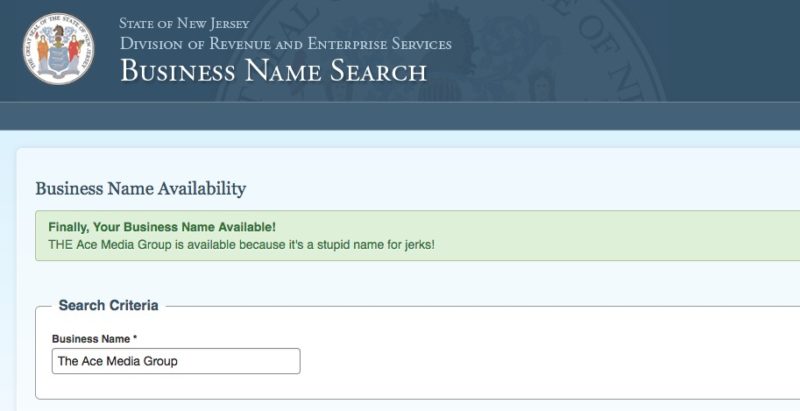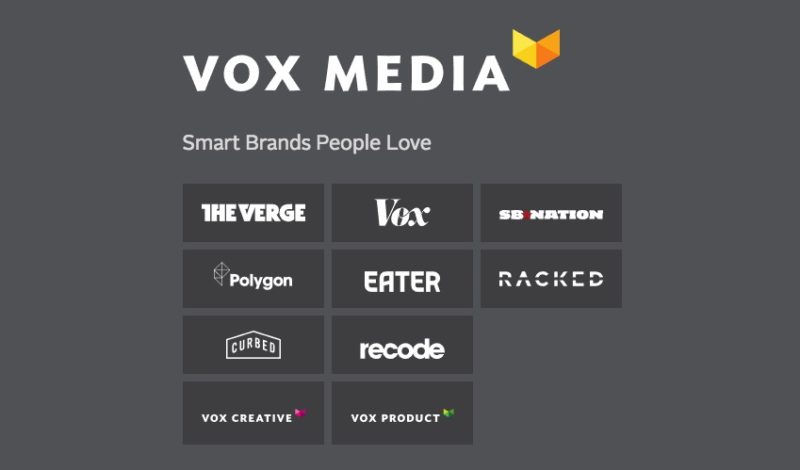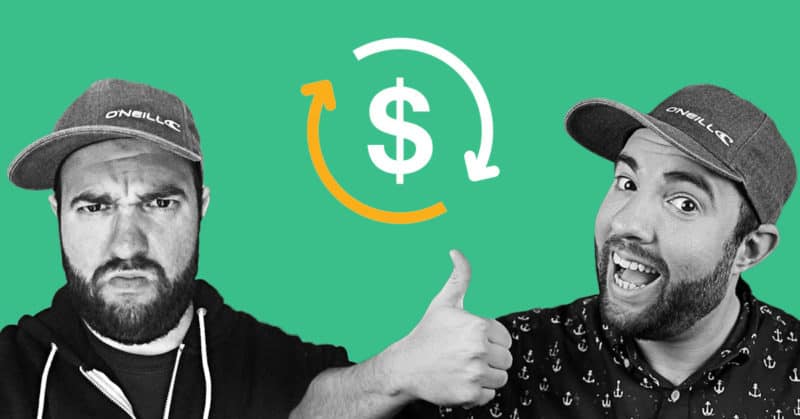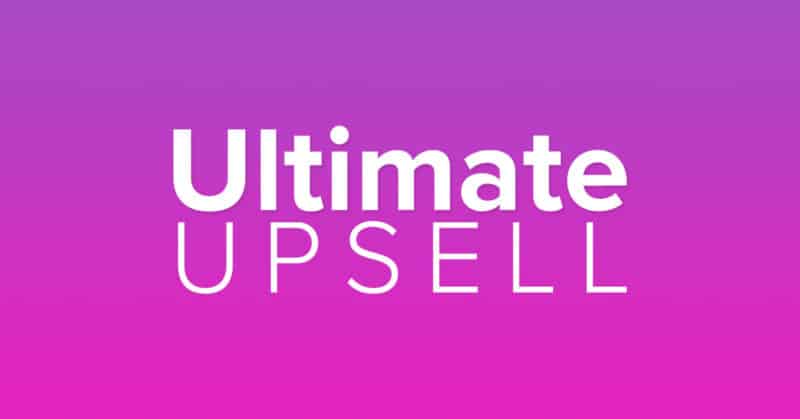Money Lab is part of a company called The Ace Media Group, LLC. I registered this unoriginal company name back in 2008.
“Ace Media” was taken. And “Ace Media GROUP” was taken!
Fine! How about, “THE Ace Media Group?”
The goal of Ace Media is to build valuable brands around hobbies and interests. I want the internet to suck less. So my focus is creating insanely great content that stands the test of time.
I call it, “Holy Shit!” content.

The graphic above is the logo for Ace Media I created in 2008.
It Started With a Pool Website
I built Swim University back in 2007. At first, I didn’t put any hard work into it – I just wrote shitty articles and focused on design instead.
I learned to spin articles and build awful backlinks for success. Your basic pre-Panda Blackhat SEO tactics.
After a while of not being successful, I let it sit there as I moved to different projects. You can see my entire entrepreneurial journey in this interactive timeline.
In 2013, I teamed up with Andrew Fiebert to redesign ListenMoneyMatters.com and create a personal finance podcast.
I looked at this project as a new vertical in my future media company portfolio – just another brand like Swim University. But when Andrew and I didn’t see eye-to-eye on this idea, I left to refocus on SwimU and started RoastyCoffee.com.
I lost track of this media company vision when I created Money Lab. I put Roasty and SwimU on auto-pilot with a small team of freelance writers to create consistent content.
But the quality of Swim University and Roasty suffered. So I’m refocusing again.
Building a Digital Media Company
I want to build a company like Vox Media with eight high-quality brands in different verticals.
The difference being a focus on smaller industries that represent consumer hobbies (like coffee brewing) or needs (like pool maintenance). And with a smaller team.
How Will The Company Make Money?
Traditional media companies tackle large verticals and make a majority of their revenue through ad sales. But there are more ways to diversify when you scale down.
Roasty is a perfect example. Instead of building an extensive website about food and drinks, I made one about a popular beverage: coffee.
This small site won’t make a fortune in ad sales, and that won’t be the primary focus. It will also make money selling products (i.e. software, digital education) and affiliate revenue.
NOTE: Affiliate money scares me. All it takes is one board meeting, and there goes most my income. I’m focusing less on affiliate earnings and more on advertising and products.
How Will The Company Be Structured?
I have a three-member team building strategy for each brand (SwimU and Roasty):
- Editor-in-Chief: 100% in charge of editorial content on the website and email newsletters. They work with freelance graphic designers, writers, and video producers until we can afford to hire in-house talent.
- Sales & Marketing: building relationships with possible sponsors, selling advertising, and promoting the website through email outreach. They’ll work with the Editor-in-Chief on what to promote and to schedule advertising products. They’ll have NO influence on editorial content.
- Tech: optimizing the work of sales and editorial by improving website performance, creating software, and technical support.
As of early 2017, I’ve hired an Editor-in-Chief for SwimU. Their current task is to produce four emails a month and improve a single piece of existing content.
I also have a volunteer helping me with Sales & Marketing. And I’ll be the Tech hire since there’s little work in this department for now.
How Will The Company Grow?
It’s easy to grow a website like Roasty to 100,000 uniques a month in under two years – just produce consistent, mediocre content, and promote.
But, if you want to reach millions of uniques a month in less than a year, focus on quality. With high-quality content comes easy-as-shit promotion, and the cycle continues.
That’ll bring more traffic and subscribers, allowing the brand to command a higher dollar value on advertising deals and sell more products, not to mention increase affiliate revenue.
My plan is to focus on creating “Holy Shit!” content to grow a massive audience for each brand.
The “Holy Shit!” Content Mission
I believe in quality over quantity. But in “content marketing,” quantity is cheaper and rewarded. Anyone can pump out mediocracy at a breakneck pace, which looks impressive as a whole, but lacks quality and originality when viewed up close.
“Holy Shit!” content is in-depth, entertaining multimedia stories or guides that are well-designed, formatted, and easy to digest. They’re shareable because they rival everything else on the internet.
It comes in the form of articles, videos, graphics, and audio. And it’s not easy to make.
When I put effort into a single piece of content, I get massive traffic and subscribers.
I spent a week writing an article about podcast promotion. I wrote 10,000 words, which over time, I edited down to 6,000 (you can read it here). And when I shared it in a Facebook group (about 6,000 people), it “blew up!”
I’ve seen this happen with rap videos I’ve made and satirical web pages. All of which took me WEEKS or MONTHS to make.
I’ve come up with a basic “Holy Shit!” content layout that I’m testing right now with the current team.
The following is subject to change as we test it.
The Content Layout Template
While each piece of content may require a different strategy, outline the base into five main parts:
- Why The Reader Should Care
- The Science Behind The Problem or Topic
- How-To Steps to Accomplish The Problem or Topic
- Helpful Product Recommendations
- A Quick Recap and Links to Further Reading
1. Why The Reader Should Care
Start with a good headline and a compelling introduction. The introduction should emotionally engage readers by telling a story, giving them a reason to care about the topic.
The introduction gives an overview of the article and should be at least two or three paragraphs that include relevant keywords.
Spend time determining why people should care. Relate to their concerns, so they continue reading.
2. The Science
Explain everything and anything related to the topic while making it easy to comprehend. Come up with a few hypotheses and research each one.
With a little research, figure out why. Add graphics and videos to support these claims. Use them to give context.
3. How-To Steps
These should be very detailed step-by-step instructions that include graphics and video if needed to clarify.
If there are products to recommend, mention and link to them in the How-To section.
4. Product Recommendations
Now that the reader knows what they need to do, it’s important to lay out very specific products that will help them.
If there are no products to recommend, skip this part of the template.
5. Recap and Further Reading
Show them what the world would be like after they solve this problem.
Also, give the readers more information on this topic. Link to another post on the current website, but if there’s an incredible resource outside the site that readers MUST see, link to that.
The Goal Of All This
I want a full-time business with a team of highly skilled people. Individuals who crave to make the internet suck less.
I want to make money. Lots of fucking money! Money is a tool helps create high-quality shit. And that’s the real goal.
I want to build brands that represent high-quality outside of the insignificant online marketing/entrepreneur/lifestyle business space.
I want people to read, watch, or listen to something my team creates and say, “holy shit!” That’s the reaction people should have every time they interact with something my company made.
It’s impossible to do this alone. I could stick to Money Lab and wear all the hats. It would be an excellent brand to be proud of, but it would only exist in a small realm of internet entrepreneurs and marketers.
So Money Lab will just be one of many brands that will focus on putting out “Holy Shit!” content. And I’m happy to wear all the hats as long as the other brands can operate with the right teams in place.
This is the essence of Money Lab. All of this is a big experiment. Everything I do in business and on the internet should be tried, tested, and improved. Forever!
I love you.




